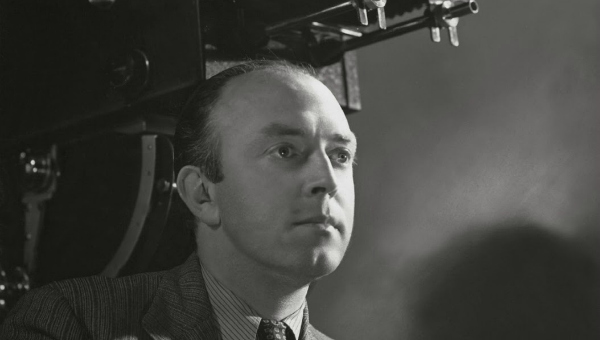 Less than a decade after being defeated in the First World War, mid-Twenties Germany – and specifically Berlin – enjoyed prosperity at the forefront of civilisation and culture. With an education system that had produced Nobel Prize winner Einstein, the city was also giving birth to the Expressionist cultural movement and was an industrial centre unparalleled in size anywhere in Europe. While Berlin had become a haven for the upper and middle classes it was also a city of contrasts, famed for its decadence but also rife with prostitution and crime, and it’s this societal schism that forms the basis of Gerhard Lamprecht’s third film.
Less than a decade after being defeated in the First World War, mid-Twenties Germany – and specifically Berlin – enjoyed prosperity at the forefront of civilisation and culture. With an education system that had produced Nobel Prize winner Einstein, the city was also giving birth to the Expressionist cultural movement and was an industrial centre unparalleled in size anywhere in Europe. While Berlin had become a haven for the upper and middle classes it was also a city of contrasts, famed for its decadence but also rife with prostitution and crime, and it’s this societal schism that forms the basis of Gerhard Lamprecht’s third film.
Lamprecht explores the impoverished lives of the underclasses in the city through the eyes of Robert Kramer (Bernard Goetzke), who is imprisoned for four years to cover up a crime committed by his girlfriend. He’s released from prison, only to discover she’s now married another man and his father has disowned him. Unable to find work, he’s prevented from taking his own life by prostitute Emma (Aug Egede Nissen) who tries to get him to put his life back on track; but without the privilege of his previous life, it seems almost impossible that he can regain his former status.
IN THE SLUMS OF BERLIN was the first significant film to look at life in Berlin with such critical eyes, and Lamprecht doesn’t shirk from showing any of the seedier side of life. With scenes including young children smoking and discussing drinking and impoverishment on every street corner, Lamprecht uses Kramer to voice his disapproval of the darker aspect of Berlin life but doesn’t restrict his social commentary purely to Kramer’s story.
While grim and unforgiving, his view of Berlin is still magnetic in all of its varied facets.
The story and characters are based on the works of Heinrich Zille, a German illustrator with a fondness for portraying the more ill-fated inhabitants of Berlin in his drawings. Lamprecht takes these as the building blocks for Kramer’s story, and his plummet to the depths of despair allows for a wide variety of these unfortunates to be portrayed, giving a great sense of the accumulated misery of Berlin’s citizens. Despite the cartoonish origins of the original drawings, IN THE SLUMS OF BERLIN avoids laughing at the expense of the poor and destitute, although it’s more than prepared to laugh with them on occasion.
But it’s the tragic story of Kramer that centres the film, his honourable intentions repeatedly ignored and later rebuffed, and despite his experiences he does his best to retain the moral high ground and to be honest about his background and situation. It’s a sincere performance from Bernard Goetzke that grounds the film, and his doomed friendship with Emma adds poignancy to the already dreadful situation.
IN THE SLUMS OF BERLIN is an absorbing insight into the harsh realities of life in post-WW1 Berlin, with both the affluence of a society increasingly on the up ever present, but also with Lamprecht never shirking from demonstrating the darker side of life. While grim and unforgiving, his view of Berlin is still magnetic in all of its varied facets. The story recognises the class differences, the difficulties in bridging the social divide and the complexities of human morality, and the themes remain as relevant today as they did nearly ninety years ago.

